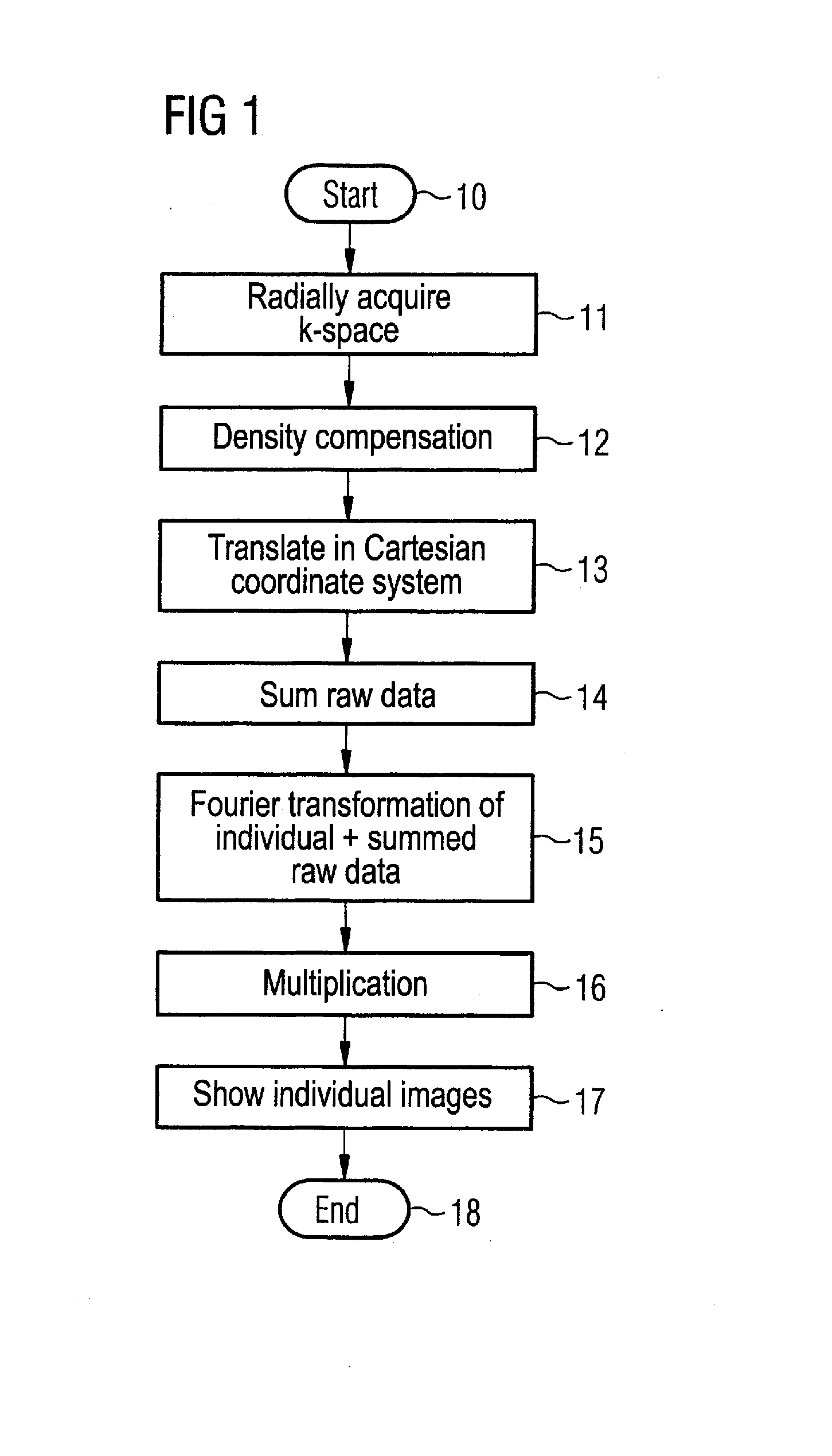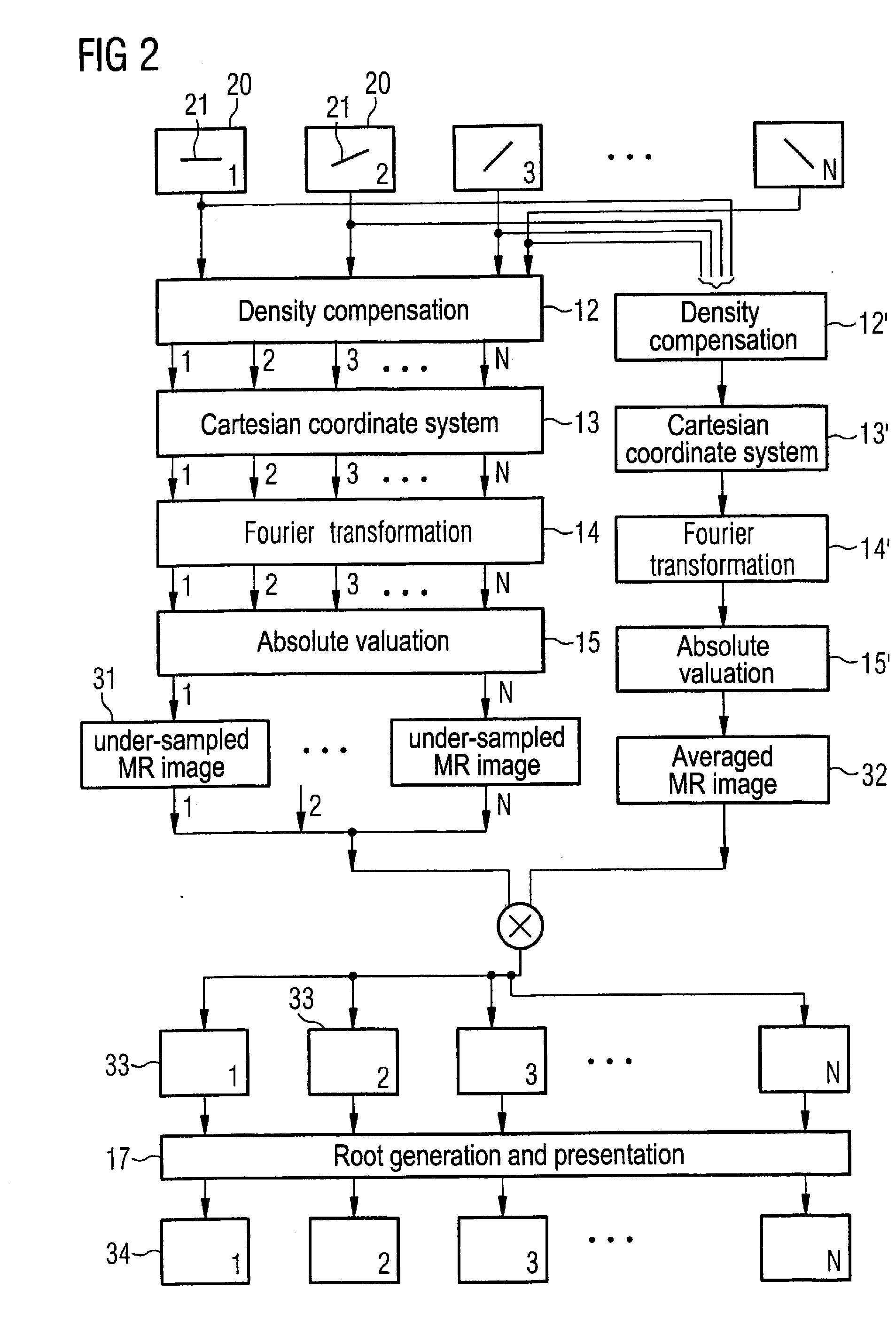Method for generation of temporally high-resolution mr exposures
a high-resolution, exposure technology, applied in the field of generating high-resolution mr exposures, can solve the problems of complex method according to the prior, simplified image calculation, and complicated back-calculation of projections
- Summary
- Abstract
- Description
- Claims
- Application Information
AI Technical Summary
Benefits of technology
Problems solved by technology
Method used
Image
Examples
Embodiment Construction
[0024]The inventive method is initially described on the basis of FIGS. 1 and 2. The method starts in a step 10. In a step 11 k-space or raw data space is filled with data with a radial acquisition technique, with a non-constant density of acquired k-space resulting from the radial acquisition technique. As shown in FIG. 2, in total N different under-sampled raw data are acquired. In the depiction selected in FIG. 2, each raw data set 20 exhibits a different trajectory 21, indicating that different projections are acquired for the various raw data. The two-dimensional, radially symmetrical exposure of k-space with various projections is shown as an example in FIG. 3. In this radially symmetrical exposure a measurement value is acquired at equidistant intervals along a projection 21 through the k-space center, with multiple projections 21 being used for each raw data set (for example a star as shown in FIG. 3). Different projections 21 are used for the various raw data sets 20 from F...
PUM
 Login to View More
Login to View More Abstract
Description
Claims
Application Information
 Login to View More
Login to View More - R&D
- Intellectual Property
- Life Sciences
- Materials
- Tech Scout
- Unparalleled Data Quality
- Higher Quality Content
- 60% Fewer Hallucinations
Browse by: Latest US Patents, China's latest patents, Technical Efficacy Thesaurus, Application Domain, Technology Topic, Popular Technical Reports.
© 2025 PatSnap. All rights reserved.Legal|Privacy policy|Modern Slavery Act Transparency Statement|Sitemap|About US| Contact US: help@patsnap.com



